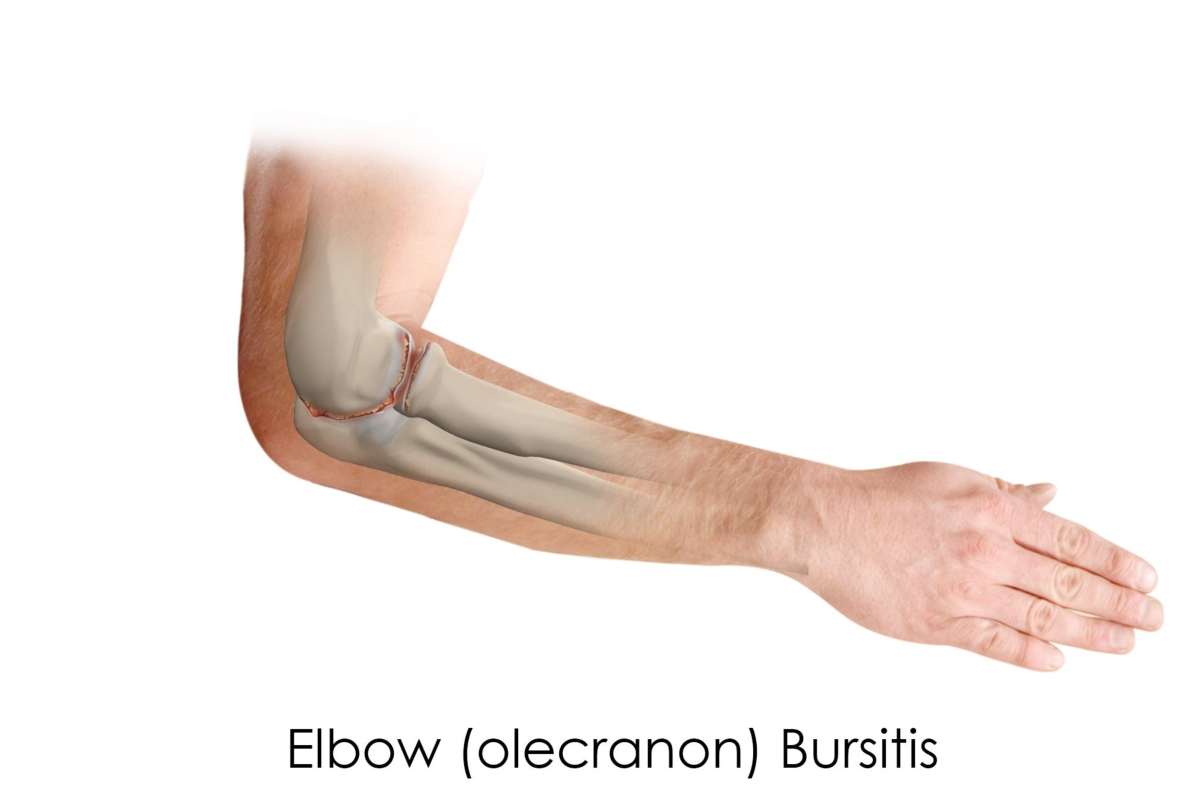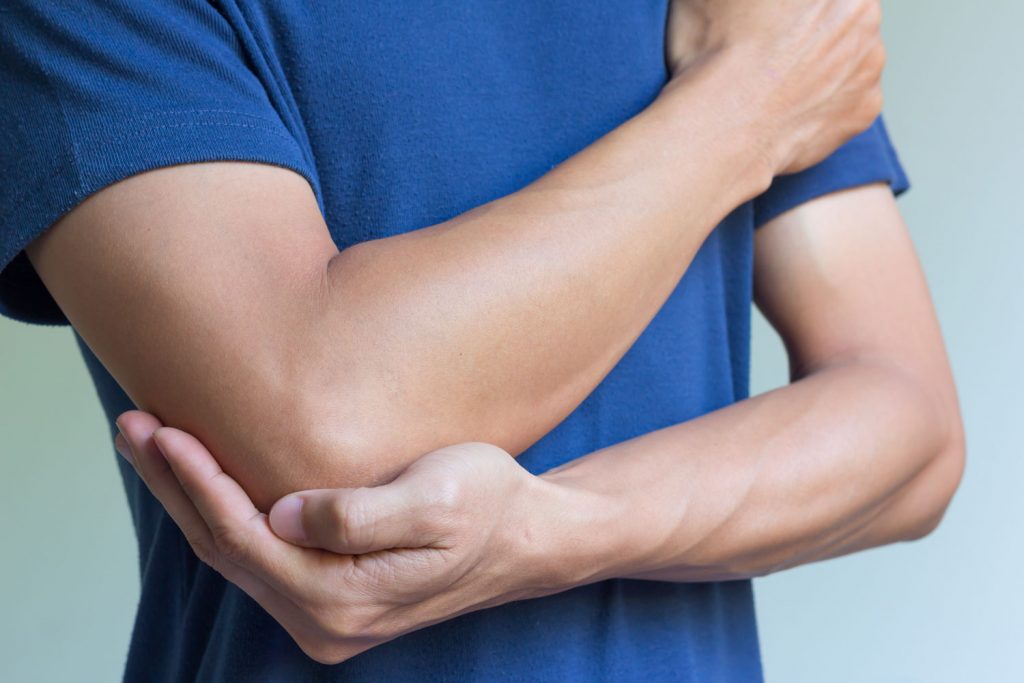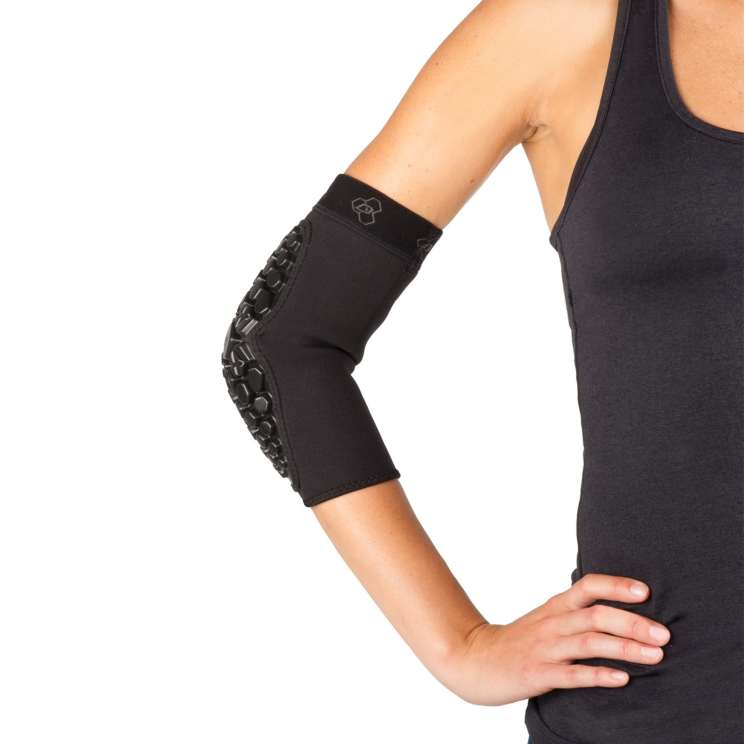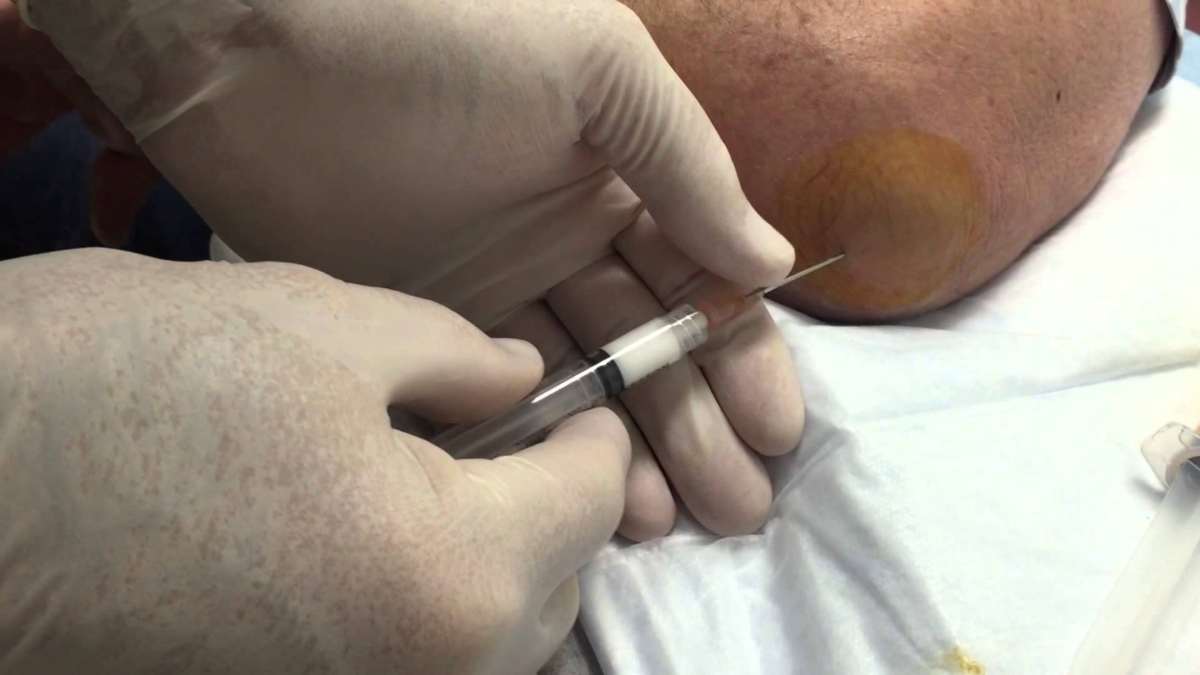Do you require any assistance? Simply reserve your appointment online below
Elbow Bursitis
Exceptional care – advanced treatment
Elbow bursitis occurs in the olecranon bursa, a thin, fluid-filled sac that is located at the boney tip of the elbow (the olecranon).
There are many bursae located throughout the body that act as cushions between bones and soft tissues, such as skin. They contain a small amount of lubricating fluid that allows the soft tissues to move freely over the underlying bone.
Normally, the olecranon bursa is flat. If it becomes irritated or inflamed, more fluid will accumulate in the bursa and bursitis will develop.

Causes of Elbow Bursitis

Elbow bursitis can occur for a number of reasons.
Trauma. A hard blow to the tip of the elbow can cause the bursa to produce excess fluid and swell.
Prolonged pressure. Leaning on the tip of the elbow for long periods of time on hard surfaces, such as a tabletop, may cause the bursa to swell.
Infection. If an injury at the tip of the elbow breaks the skin, such as an insect bite, scrape, or puncture wound, bacteria may get inside the bursa sac and cause an infection. The infected bursa produces fluid, redness, swelling, and pain. If the infection goes untreated, the fluid may turn to pus.
Occasionally, the bursa sac may become infected without an obvious injury to the skin.
Medical conditions. Certain conditions, such as rheumatoid arthritis and gout, are associated with elbow bursitis.
Symptoms of Elbow Bursitis
Swelling.
The first symptom of elbow bursitis is often swelling.
The skin on the back of the elbow is loose, which means that a small amount of swelling may not be noticed right away.
In many cases, the first sign of bursitis is swelling at the elbow.
Pain.
As the swelling continues, the bursa begins to stretch, which causes pain.
The swelling may grow large enough to restrict elbow motion.
Redness and warm to the touch.
If the bursa is infected, the skin becomes red and warm. If the infection is not treated right away, it may spread to other parts of the arm or move into the bloodstream.
This can cause serious illness. Occasionally, an infected bursa will open spontaneously and drain pus.
Treatment of Elbow Bursitis
If your doctor suspects that bursitis is due to an infection, he or she may recommend aspirating (removing the fluid from) the bursa with a needle. This is commonly performed as an office procedure. Fluid removal helps relieve symptoms and gives your doctor a sample that can be looked at in a laboratory to identify if any bacteria are present. This also lets your doctor know if a specific antibiotic is needed to fight the infection.
Your doctor may prescribe antibiotics before the exact type of infection is identified. This is done to prevent the infection from progressing. The antibiotic that your doctor prescribes at this point will treat a number of possible infections.

Management options of Elbow Bursitis

If the bursitis is not from an infection, there are several management options.
- Elbow pads. An elbow pad may be used to cushion your elbow.
- Activity changes. Avoid activities that cause direct pressure to your swollen elbow.
- Medications. Oral medications such as ibuprofen or other anti-inflammatories may be used to reduce swelling and relieve your symptoms.
If swelling and pain do not respond to these measures after 3 to 6 weeks, your doctor may recommend removing fluid from the bursa and injecting a corticosteroid medication into the bursa. The steroid medication is an anti-inflammatory drug that is stronger than the medication that can be taken by mouth. In some patients, corticosteroid injections work well to relieve pain and swelling.
Surgery for an infected bursa. If the bursa is infected and it does not improve with antibiotics or by removing fluid from the elbow, surgery to remove the entire bursa may be needed. This surgery may be combined with further use of oral or intravenous antibiotics. The bursa usually grows back as a non-inflamed, normally functioning bursa over a period of several months.
Surgery for the non infected bursa. If elbow bursitis is not a result of infection, surgery may still be recommended if nonsurgical treatments do not work. In this case, surgery to remove the bursa is usually performed as an outpatient procedure.

